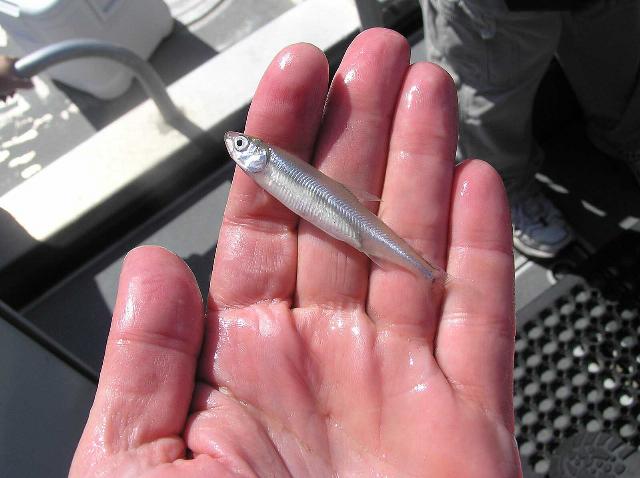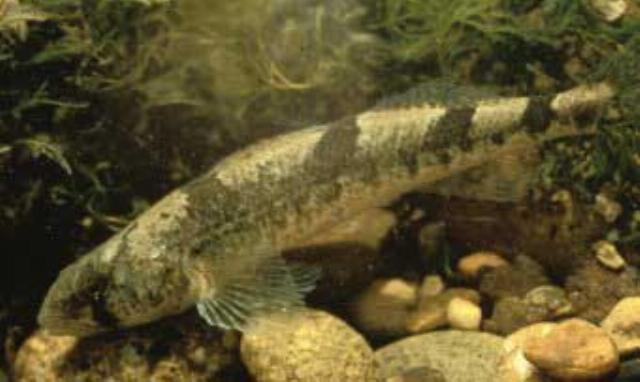Wait, there's no such thing as a Snail Darter?
Species are becoming extinct! It’s a crisis competing for all manner of other crises, though at the moment the “Climate Crisis,” AKA “Climate Change,” is winning the publicity and funding war. Keeping in mind much of the literature on the subject—trust the science—is very much in the hysterical category, consider this:
How many species have gone extinct? Prior to humans becoming a primary contributor to extinctions at the dawn of the Holocene some 12,000 years ago, scientists called the rate of species extinction, the background extinction rate, and estimated to be between 0.01 to 0.1 extinctions per million species per year. It’s also estimated that humans have increased this rate by between 1,000 to 10,000 times. Under the assumption there are currently 8.75 million species on this planet, this means that the current estimate of annual species lost to extinction ranges from 87.5 to 8,750 per year!
Keep in mind those alarming (!) numbers include huge numbers of microorganisms, which with insects, make up most known species. One can always tell real science by the number of exclamation marks used to pump up “facts.” Actually, species have been going extinct, mutating and evolving for far longer than the advent of man, though contemporary science is quite certain such extinction has been greatly increased by man and in alignment with Climate Change predictions, we’ll be doomed ten years from now…or ten years later…or—and they really mean it this time—ten years after that!
I’m rather glad dinosaurs aren’t around anymore and Saber Toothed Tigers, those too.

Graphic: Delta Smelt. DS in hand2 USFWS--Peter.Johnsen--2008. Wikimedia Commons.org. Public Domain.
California has long been infamous for choosing the preservation of the “Delta Smelt,
a bait fish, over farmers. In the early 2000s, the Delta Smelt, a freshwater fish, appeared to be declining, and as one might expect, California diverted freshwater from agriculture to the fish, actually sending most of it into the Pacific. The fish could not be reached for comment.
The conflagration ongoing in Southern California, exacerbated by a lack of water to fight the fires, which as this is written remain 0% contained, has revived something California politicians would rather keep under wraps. They, and environmentalists/greenies everywhere, still like bait fish a lot more than human beings, fish like the Snail Darter:

Graphic: "Snail Darter." Percina tanasi.jpg. Wikimedia Commons.org. Public Domain.
In the annals of environmental law, no creature is more famous than the Snail Darter, the endangered species that shut down completion of the Tellico Dam in the 1970s. It required congressional legislation to allow the dam to be finished after years in the courts where judges maintained that the species had to be protected under the Endangered Species Act. According to the New York Times., the species may turn out to be as mythical as a unicorn.
The controversy began in 1967 when the Tennessee Valley Authority started constructing a dam on the Little Tennessee River, roughly 20 miles outside Knoxville. Environmentalists and locals opposed the project and, in 1973, a zoologist at the University of Tennessee named David Etnier went snorkeling with his students and found a possible solution. He spotted a small fish and called it a “snail darter” because of its movements and eating habits. He reportedly announced “Here’s a little fish that might save your farm.”
Dr. Zygmunt Plater, an environmental law professor at Boston College, represented the snail darter before the Supreme Court. He did an excellent job and, in 1978, the Supreme Court ruled that “the Endangered Species Act prohibits impoundment of the Little Tennessee River by the Tellico Dam” to protect the endangered snail darters.
Now it appears there really is no such thing as a “Snail Darter” and there never was.
The Times now quotes Thomas Near, the curator of ichthyology at the Yale Peabody Museum who leads a fish biology lab at the university, that “there is, technically, no snail darter.” Worse yet, it was actually just another member of the eastern population of Percina uranidea, or stargazing darters, which is not considered endangered.
Near and his colleagues have published the results in Current Biology
Plater insisted that Dr. Near is merely a “lumper” who tends to rely on genetics rather than being a “splitter” who proliferates new species. Dr. Plater added that “whether he intends it or not, lumping is a great way to cut back on the Endangered Species Act.”
That was a particularly revealing point from the law professor since it suggests what could be an overwhelming motive could be legal and not scientific in declaring the new species — the very objection raised in the litigation and denied by many advocates.
Now it appears we can’t trust the lawyers any more than we can trust the science. Both have apparently kept the Snail Darter fraud going since the 70’s, and humanity, as always, has been the loser.
On a different subject, if you are not already a subscriber, you may not know that we’ve implemented something new: A weekly newsletter with unique content from our editors for subscribers only. These essays alone are worth the cost of the subscription.
Mike McDaniel is a USAF veteran, classically trained musician, Japanese and European fencer, life-long athlete, firearm instructor, retired police officer and high school and college English teacher. He is a published author and blogger. His home blog is Stately McDaniel Manor.
FOLLOW US ON
Recent Articles
- New York Greenlights Quarantine Camps
- Reality Check for Democrats
- A MAGA Siege of the Democrats’ Deep State
- Why Incel and 4B Culture Matter
- Defending Donald Trump: A Response to Jeffrey Goldberg and The Atlantic on the Signal Leak
- Are Judges Complicit in Lawfare?
- Deep Dive: The Signal Chat Leak
- Mark Steyn’s Reversal of Fortune
- Where We Need Musk’s Chainsaw the Most
- Trump Is Not Destroying the Constitution, but Restoring It
Blog Posts
- Knife control comes to the U.K.: Prime Minister Starmer bans Ninja swords
- This Tuesday, Wisconsonites must vote for Brad Schimel for the State Supreme Court
- Democrats should get a clue from the Palestinians who are now marching against Hamas
- Trump takes on Fauxahontas's brainchild
- Consumer Sentiment Survey: This too shall pass
- If they only had knife control....
- Newsom and Walz struggle to appear normal
- Anti-Trump lawfare: yes, it's a conspiracy
- Criminal attack? You're on your own.
- Amid disaster, watch Bangkok clean up and rebuild
- Katherine Maher shoots herself, and NPR, in the foot
- A visit to DOGE
- You just might be a Democrat if ...
- Yahoo Finance writer says Trump’s tariffs will see America driving Cuban-style antique cars
- Kristi Noem and the prison cell






